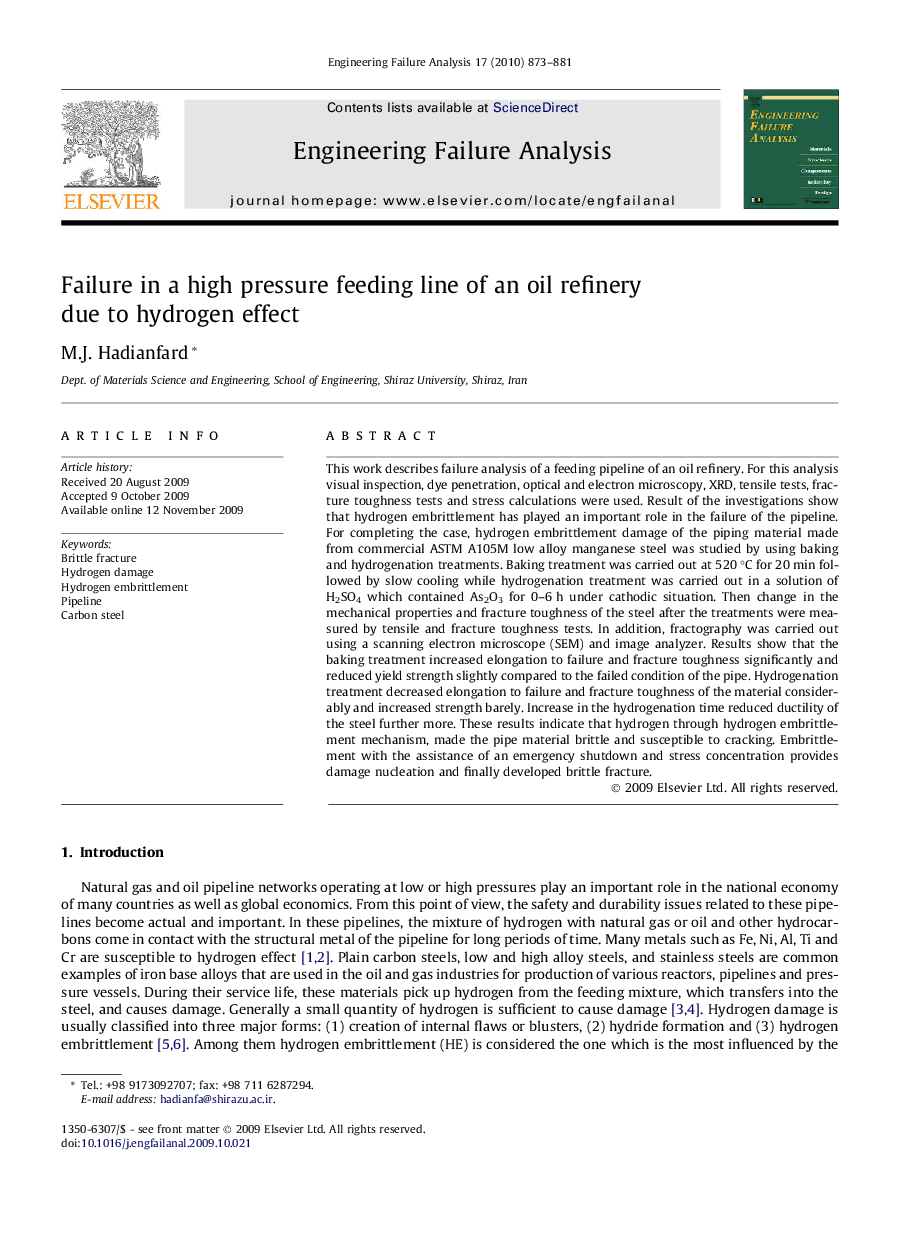| Article ID | Journal | Published Year | Pages | File Type |
|---|---|---|---|---|
| 769020 | Engineering Failure Analysis | 2010 | 9 Pages |
This work describes failure analysis of a feeding pipeline of an oil refinery. For this analysis visual inspection, dye penetration, optical and electron microscopy, XRD, tensile tests, fracture toughness tests and stress calculations were used. Result of the investigations show that hydrogen embrittlement has played an important role in the failure of the pipeline. For completing the case, hydrogen embrittlement damage of the piping material made from commercial ASTM A105M low alloy manganese steel was studied by using baking and hydrogenation treatments. Baking treatment was carried out at 520 °C for 20 min followed by slow cooling while hydrogenation treatment was carried out in a solution of H2SO4 which contained As2O3 for 0–6 h under cathodic situation. Then change in the mechanical properties and fracture toughness of the steel after the treatments were measured by tensile and fracture toughness tests. In addition, fractography was carried out using a scanning electron microscope (SEM) and image analyzer. Results show that the baking treatment increased elongation to failure and fracture toughness significantly and reduced yield strength slightly compared to the failed condition of the pipe. Hydrogenation treatment decreased elongation to failure and fracture toughness of the material considerably and increased strength barely. Increase in the hydrogenation time reduced ductility of the steel further more. These results indicate that hydrogen through hydrogen embrittlement mechanism, made the pipe material brittle and susceptible to cracking. Embrittlement with the assistance of an emergency shutdown and stress concentration provides damage nucleation and finally developed brittle fracture.
